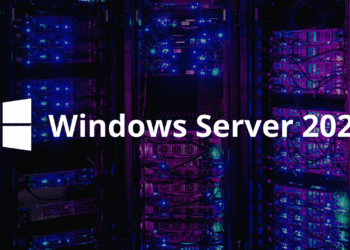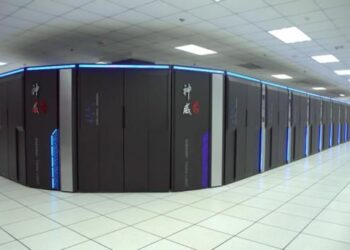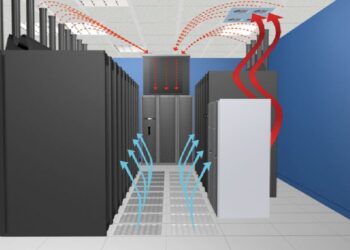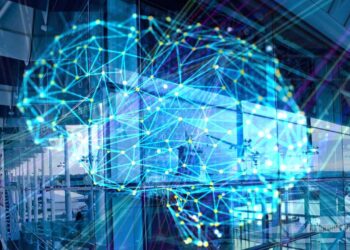The surge in artificial intelligence (AI) server demand is reshaping the technological landscape across the globe. Driven by exponential growth in data, increasingly complex algorithms, and the need for faster, more efficient computation, businesses and governments are investing heavily in AI infrastructure. In this article, we explore the evolution of AI computing, the factors propelling the demand for advanced AI servers, regional market trends, the technological innovations behind these powerful machines, and the future implications for businesses and consumers alike.
Over the past few decades, artificial intelligence has transformed from a theoretical concept into a practical tool that drives decision-making in various sectors. Early AI systems were limited by the processing power available on traditional servers. However, as the field evolved—with breakthroughs in machine learning, deep learning, and neural networks—the computational demands grew exponentially.
Historically, traditional servers built around central processing units (CPUs) were adequate for routine data processing tasks. Today, however, AI applications require specialized hardware, such as graphics processing units (GPUs) and tensor processing units (TPUs), designed specifically to handle parallel processing and complex matrix calculations. This shift from general-purpose computing to specialized AI servers has been pivotal in meeting the needs of modern applications like natural language processing, image recognition, and autonomous driving.
Key milestones in this evolution include:
- Early AI Systems: Relying on rule-based algorithms and limited data sets.
- Introduction of Machine Learning: Expanding capabilities through pattern recognition and predictive analytics.
- Deep Learning Breakthroughs: Leveraging multi-layer neural networks to achieve unprecedented accuracy in tasks such as speech recognition and computer vision.
- Specialized Hardware: The advent of GPUs and TPUs revolutionized processing speeds and efficiency, enabling real-time data analysis and decision-making.
As AI applications become more integrated into everyday life, the underlying infrastructure must scale accordingly. This evolution is not merely about upgrading hardware but rethinking the architecture of data centers and cloud services to accommodate high-performance computing needs.
Drivers Behind the Surge in AI Server Demand
Several key factors are fueling the global demand for AI servers. As industries increasingly rely on data-driven insights, the need for robust and efficient computational resources has never been greater.
Advanced Machine Learning Models
Modern machine learning models, particularly deep learning networks, require immense computational power. These models are characterized by a large number of parameters and complex architectures that demand rapid processing and massive parallel computations. The continual refinement of these models has spurred investments in hardware that can support their intensive processing needs.
Big Data Explosion
The digital era has witnessed an unprecedented explosion of data. Every day, organizations collect petabytes of data from various sources, including social media, IoT devices, and transactional records. Managing and processing such enormous datasets requires high-performance servers optimized for AI workloads. This big data phenomenon is a primary catalyst for the surge in demand for AI-specific servers.
Expansion of Cloud Computing
Cloud service providers have played a pivotal role in democratizing access to AI capabilities. With the flexibility to scale computational resources up or down, cloud platforms offer businesses the agility required to experiment with and deploy AI solutions. This has led to a significant increase in investments in AI-optimized data centers, as companies strive to keep pace with the evolving technological landscape.
Industry-Specific Applications
AI’s impact is felt across a diverse range of sectors, each with unique computational requirements:
A. Healthcare: From diagnostics and personalized treatment plans to drug discovery and predictive analytics, AI is revolutionizing the medical field.
B. Finance: AI algorithms are integral to fraud detection, algorithmic trading, and risk management, necessitating robust servers capable of processing large volumes of financial data in real time.
C. Automotive: The development of autonomous vehicles relies on AI to process sensory data and make split-second decisions, driving the need for high-performance computing.
D. Retail and E-commerce: Personalized recommendations, inventory management, and demand forecasting are increasingly powered by AI, pushing retailers to invest in faster, more efficient servers.
The Role of Deep Learning and Neural Networks
Deep learning, a subset of machine learning, relies on neural networks that mimic the human brain’s structure and function. These networks require significant computational resources for training and inference, making them a critical driver of the demand for specialized hardware. As research continues to push the boundaries of what deep learning models can achieve, the hardware supporting these systems must evolve in tandem.
Global Research and Innovation Initiatives
Governments and private sectors worldwide are investing billions in AI research and development. These investments not only spur innovation but also drive the need for cutting-edge infrastructure. The establishment of AI research hubs, innovation centers, and partnerships between tech giants and academic institutions further accelerates the demand for advanced AI servers.
Global Trends in AI Server Demand
The rising demand for AI servers is not confined to a single region; it is a global phenomenon influenced by diverse economic, technological, and policy factors.
Regional Market Dynamics
- North America: With Silicon Valley at its core, North America leads in AI research and the deployment of advanced server technologies. Major companies invest heavily in custom AI hardware to maintain their competitive edge.
- Europe: European nations are rapidly adopting AI technologies, focusing on ethical AI and data protection. Investments in AI infrastructure are also part of broader digital transformation strategies across the continent.
- Asia-Pacific: Home to several of the world’s largest manufacturers and tech innovators, the Asia-Pacific region is witnessing a robust increase in AI server installations. Countries like China, Japan, and South Korea are at the forefront, driving both production and demand.
- Other Regions: Emerging markets in Latin America, Africa, and the Middle East are beginning to embrace AI, spurred by governmental initiatives and private investments. Although these regions are in the early stages of adoption, the trajectory suggests significant growth in the near future.
Influence of Tech Giants
Leading technology companies, including Google, Amazon, Microsoft, and IBM, are pivotal in setting the tone for global AI infrastructure trends. Their investments in AI research and the development of proprietary hardware have a cascading effect on the entire market. These companies are not only driving innovation but also shaping supply chains and setting new benchmarks for performance and efficiency.
Investment in AI Research and Development
Government initiatives and private sector funding are at an all-time high. Investment in AI is not merely about software development but encompasses the entire ecosystem, including hardware manufacturing, cloud infrastructure, and specialized training programs. This comprehensive approach ensures that advancements in AI technology are supported by equally advanced hardware.
Technological Innovations Driving AI Server Capabilities
As the demand for AI servers grows, so does the need for technological innovation. Several key advancements are reshaping the capabilities of these servers, making them more powerful and efficient.
Specialized Processing Units
The emergence of specialized processors has been a game-changer in the AI hardware landscape:
A. Graphics Processing Units (GPUs): Originally designed for rendering images and video, GPUs have become essential for AI tasks due to their ability to handle parallel processing. Their architecture makes them ideal for training deep learning models, which involve massive parallel computations.
B. Tensor Processing Units (TPUs): Developed specifically for AI, TPUs are designed to accelerate machine learning tasks. They offer significant performance improvements over traditional CPUs and GPUs for specific AI workloads.
C. Field-Programmable Gate Arrays (FPGAs): FPGAs provide a flexible alternative that can be reprogrammed for various tasks. This adaptability makes them valuable in environments where AI algorithms evolve rapidly.
Server Architecture and Design Improvements
Modern AI servers are designed with efficiency in mind. Innovations in server architecture include:
- Enhanced Cooling Solutions: As computational power increases, so does heat generation. Innovative cooling technologies, such as liquid cooling and advanced airflow designs, ensure that servers operate at optimal temperatures.
- Energy Efficiency: With rising energy costs and environmental concerns, manufacturers are focusing on creating energy-efficient servers. These improvements not only reduce operational costs but also contribute to sustainability goals.
- Scalable Infrastructure: Modular designs and cloud-based architectures allow data centers to scale their operations quickly, accommodating fluctuating workloads without compromising performance.
Emerging Technologies
In addition to the current innovations, several emerging technologies hold promise for the future of AI servers:
- Quantum Computing: Though still in its infancy, quantum computing offers the potential to solve problems that are currently intractable for classical computers. As research progresses, quantum processors may become integral components of AI infrastructure.
- Neuromorphic Computing: Inspired by the human brain, neuromorphic computing aims to create systems that mimic neural structures. This approach could lead to more efficient processing of complex AI tasks, further boosting performance.
- Optical Computing: Using light instead of electricity to process information, optical computing could significantly increase data transfer speeds and reduce latency in AI applications.
Market Challenges and Competitive Landscape
While the demand for AI servers is surging, the industry faces several challenges that could influence its trajectory.
Supply Chain Disruptions
The global supply chain for semiconductor manufacturing has encountered significant disruptions over the past few years. Factors such as geopolitical tensions, natural disasters, and pandemics have led to shortages of critical components. These supply chain issues pose a threat to the timely production and distribution of AI servers.
Economic and Trade Factors
Economic fluctuations and trade restrictions also impact the AI hardware market. Tariffs, export controls, and other trade barriers can affect the cost and availability of advanced components. Companies must navigate these challenges carefully to maintain a competitive edge.
Technological Competition
The race to develop the most efficient AI servers is highly competitive. Companies are investing billions in research and development, which creates a dynamic environment where technological breakthroughs can quickly alter market standings. Maintaining an edge in such a competitive landscape requires constant innovation and strategic partnerships.
List of competitive challenges includes:
A. High capital expenditures for research and development.
B. Intense competition among global manufacturers.
C. Regulatory hurdles and trade restrictions that complicate supply chains.

Sustainability and Regulatory Pressures
As data centers expand, so does their environmental impact. Regulatory bodies worldwide are placing greater emphasis on sustainability. Companies are increasingly required to balance performance with energy efficiency and environmental responsibility. This means investing in renewable energy sources and innovative cooling technologies to minimize their carbon footprint.
Impact on Cloud Service Providers and Data Centers
The rapid adoption of AI technologies is profoundly affecting cloud service providers and data center operations. These entities are at the forefront of deploying the latest AI servers and reconfiguring their infrastructure to handle the increased load.
Cloud Adoption and AI Integration
Cloud computing has revolutionized the way companies access computational resources. Providers like Amazon Web Services, Microsoft Azure, and Google Cloud are integrating AI-specific hardware into their platforms to offer enhanced services. This integration allows businesses to leverage powerful AI capabilities without the need for substantial on-premise investments.
Scalability and Flexibility
Modern data centers are designed for scalability. As demand for AI services grows, these centers can dynamically allocate resources to meet fluctuating needs. Cloud-based AI solutions enable businesses to scale operations without compromising on speed or efficiency. Furthermore, hybrid cloud models that combine on-premise and cloud solutions are becoming increasingly popular, offering flexibility and redundancy.
Security and Data Integrity
With greater computational power comes the responsibility of ensuring data security. AI applications often process sensitive information, making robust cybersecurity measures essential. Data centers are investing in advanced security protocols to protect against cyber threats and ensure data integrity. This includes encryption, multi-factor authentication, and continuous monitoring systems.
Future Outlook and Industry Predictions
The trajectory for AI server demand is poised for further growth as technological advancements continue to push the boundaries of what is possible.
Growth Estimates and Market Projections
Industry analysts predict that the AI server market will experience substantial growth in the coming years. Factors contributing to this expansion include increased adoption of AI across sectors, advancements in hardware technology, and the proliferation of data-driven applications. Projections indicate that investments in AI infrastructure could reach tens of billions of dollars globally, with emerging markets playing an increasingly significant role.
Technological Disruptions on the Horizon
Several emerging technologies have the potential to disrupt the AI server market:
- AI-Specific Chips: As manufacturers continue to develop chips tailored specifically for AI workloads, we can expect significant performance improvements.
- Integration of Quantum and Neuromorphic Technologies: While still experimental, these technologies may eventually become mainstream, radically altering server design and efficiency.
- Edge Computing: The shift towards edge computing, where processing is done closer to the data source, will also drive innovations in AI server architectures. This can reduce latency and improve real-time processing capabilities.
Global Shifts in Technology Leadership
As countries vie for leadership in the AI arena, investments in server infrastructure will be a critical component of national strategies. Nations that invest strategically in research, manufacturing, and innovation are likely to emerge as leaders in AI technology. This competitive landscape may reshape global economic power, influencing trade policies and international collaborations.
Implications for Businesses and Consumers
The global surge in AI server demand has far-reaching implications that extend beyond the realm of technology. Both businesses and consumers stand to benefit from the rapid advancements in AI infrastructure.
For Businesses
Companies across all sectors are leveraging AI to streamline operations, enhance customer experiences, and drive innovation. The availability of high-performance AI servers means that businesses can now process vast amounts of data more quickly and accurately. This, in turn, enables better decision-making, improved operational efficiencies, and the ability to offer personalized services.
For Consumers
On the consumer side, the integration of AI into everyday services leads to tangible benefits. Enhanced personalization in online shopping, faster and more accurate voice recognition in virtual assistants, and improved safety features in autonomous vehicles are just a few examples of how AI is transforming daily life. As the underlying infrastructure becomes more robust, consumers can expect smoother, more reliable interactions with technology.

Economic and Social Impact
The widespread adoption of AI technology contributes significantly to economic growth. Enhanced productivity, the creation of new job opportunities in AI-related fields, and the overall modernization of industries are some of the macroeconomic benefits. Moreover, improved services and innovations in healthcare, education, and public services have the potential to improve the quality of life on a global scale.
Case Studies and Success Stories
To illustrate the transformative power of AI servers, it is useful to examine real-world examples from leading companies and diverse industries.
Case Study 1: Tech Giant Innovations
A renowned technology company recently unveiled its new line of AI servers designed to accelerate machine learning tasks. By integrating cutting-edge GPUs and TPUs, the company was able to reduce training times for complex models by over 50%. This breakthrough has significant implications for industries ranging from healthcare to finance, where rapid data processing is critical.
Case Study 2: Transforming Healthcare with AI
In the healthcare sector, a major hospital network implemented an AI-powered diagnostic system using state-of-the-art servers. The system was able to analyze medical images and patient data to identify potential health issues faster than traditional methods. This not only improved diagnostic accuracy but also reduced waiting times for critical treatments.
Case Study 3: Autonomous Vehicles and Real-Time Processing
Automotive companies are heavily investing in AI servers to support the development of autonomous driving technologies. In one notable example, an automobile manufacturer partnered with a cloud service provider to deploy AI servers capable of processing sensor data in real time. This collaboration resulted in significant improvements in the vehicle’s ability to navigate complex urban environments safely.
Recommendations for Companies Investing in AI Infrastructure
For organizations planning to invest in AI servers, strategic planning and careful evaluation of technological options are essential. The following recommendations can help guide decision-making:
A. Assess Current and Future Needs:
Conduct a thorough analysis of your current computational workloads and anticipate future growth. Consider the scalability of your infrastructure to accommodate rapidly evolving AI applications.
B. Evaluate Hardware Options:
Compare the performance and cost-effectiveness of various hardware solutions, including GPUs, TPUs, and FPGAs. Choose components that align with your specific workload requirements and operational goals.
C. Prioritize Energy Efficiency and Sustainability:
Look for servers that incorporate advanced cooling technologies and energy-efficient designs. Sustainability is not only an environmental imperative but also a cost-saving measure in the long term.
D. Invest in Expertise and Training:
Ensure your technical team is well-versed in the latest AI technologies and server management practices. Ongoing training and collaboration with industry experts can yield significant competitive advantages.
E. Plan for Security and Compliance:
Implement robust cybersecurity measures to protect sensitive data and ensure compliance with global regulations. Regular audits and updates to your security protocols are essential in an increasingly complex digital landscape.
F. Stay Informed on Technological Trends:
Monitor emerging technologies such as quantum computing and neuromorphic chips that may disrupt the market. Staying ahead of technological trends will help your organization adapt quickly to new opportunities.
G. Consider Hybrid and Edge Solutions:
Evaluate the benefits of hybrid cloud architectures and edge computing, which can reduce latency and improve real-time data processing capabilities. These solutions offer flexibility and can be tailored to specific business needs.
Conclusion
The global demand for AI servers is surging as businesses, governments, and research institutions strive to harness the full potential of artificial intelligence. From the evolution of computing infrastructure to the adoption of specialized hardware like GPUs and TPUs, the landscape of AI is rapidly transforming. This transformation is driven by the explosion of big data, the complexity of modern AI models, and significant investments in research and development.
The challenges facing the industry—ranging from supply chain disruptions to economic and regulatory pressures—are considerable, but the opportunities are even greater. Cloud service providers, data centers, and hardware manufacturers are working together to build an ecosystem that supports the demands of today’s AI applications and tomorrow’s innovations. As the technological frontier expands, organizations must adapt, invest wisely, and remain agile to leverage these advancements for competitive advantage.
In the coming years, we can expect further breakthroughs in server technology, enabling more sophisticated AI applications across various sectors. The implications for businesses and consumers are profound, promising improved efficiency, enhanced services, and a new era of technological innovation. Companies that invest in the right infrastructure today will be well-positioned to lead the digital transformation of tomorrow.
By embracing advanced AI server technologies and integrating them into broader digital strategies, organizations can not only improve their operational performance but also contribute to shaping a future where artificial intelligence drives sustainable growth and innovation.










